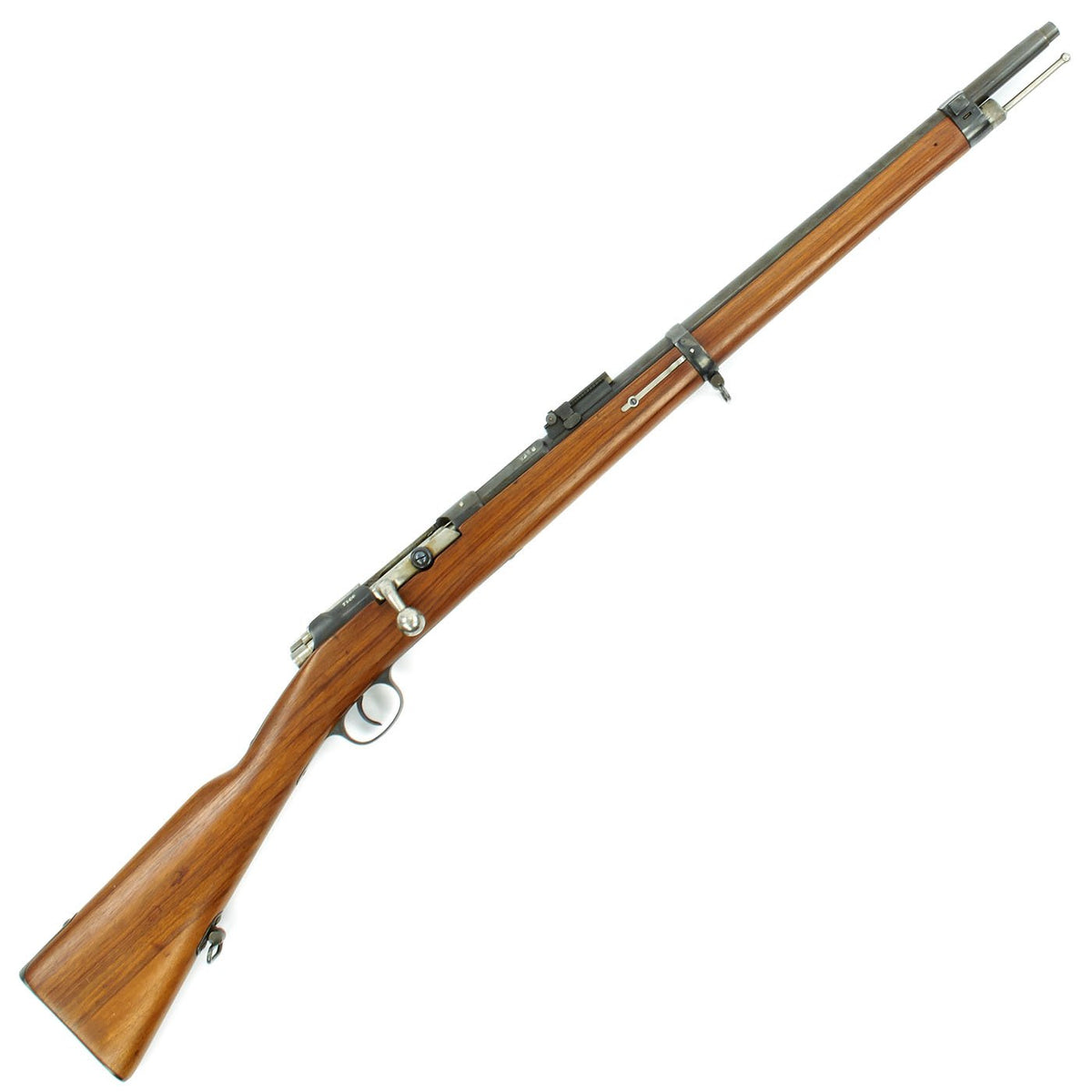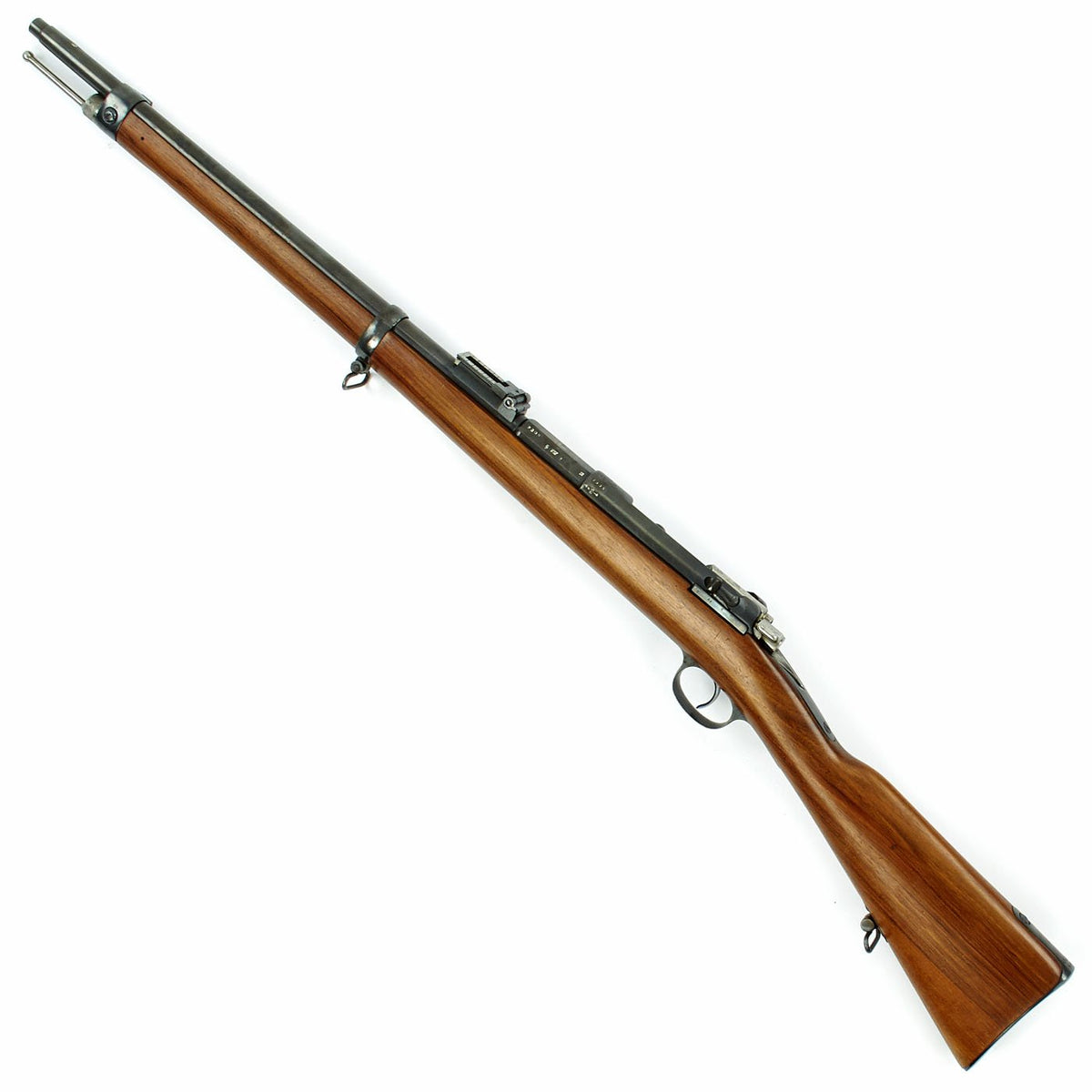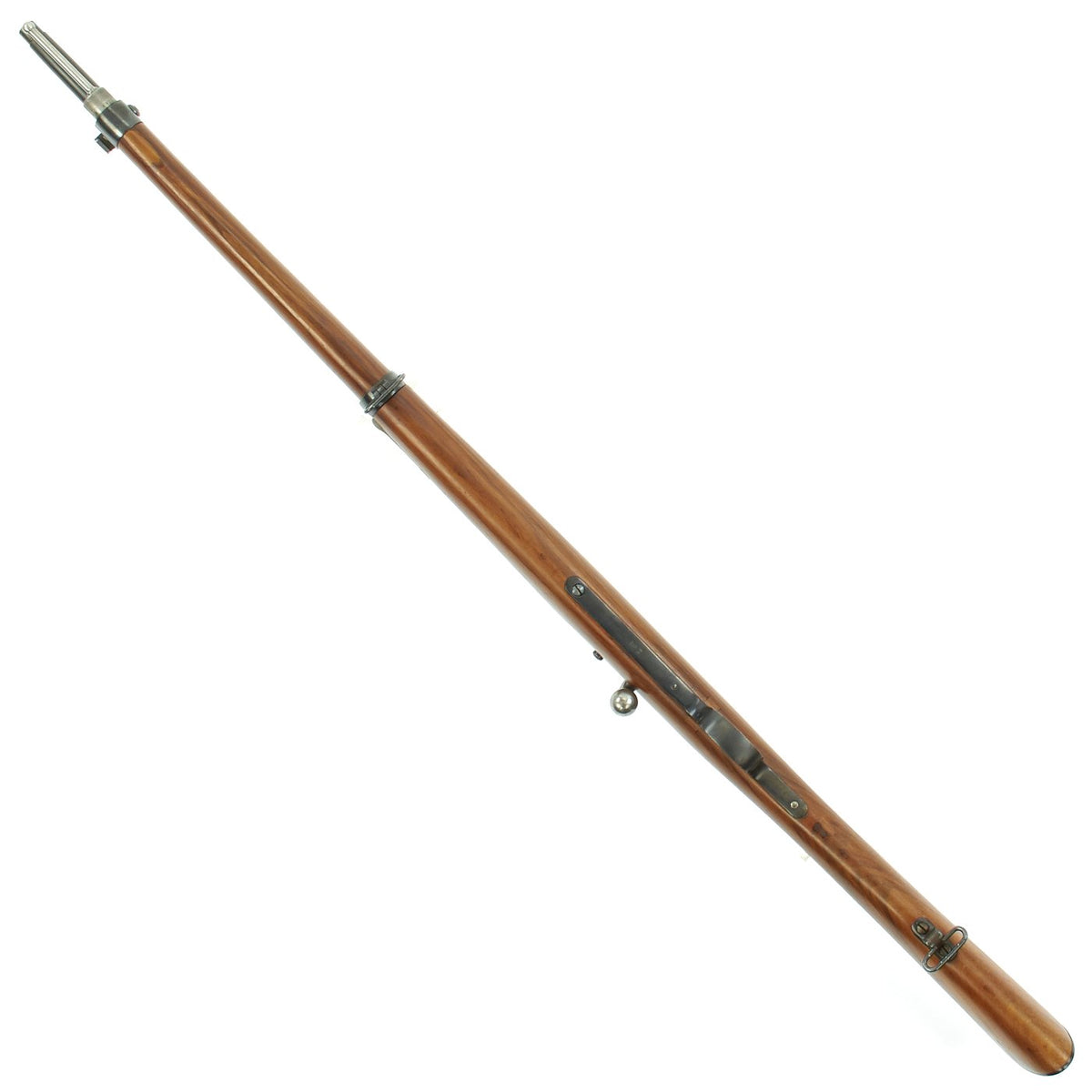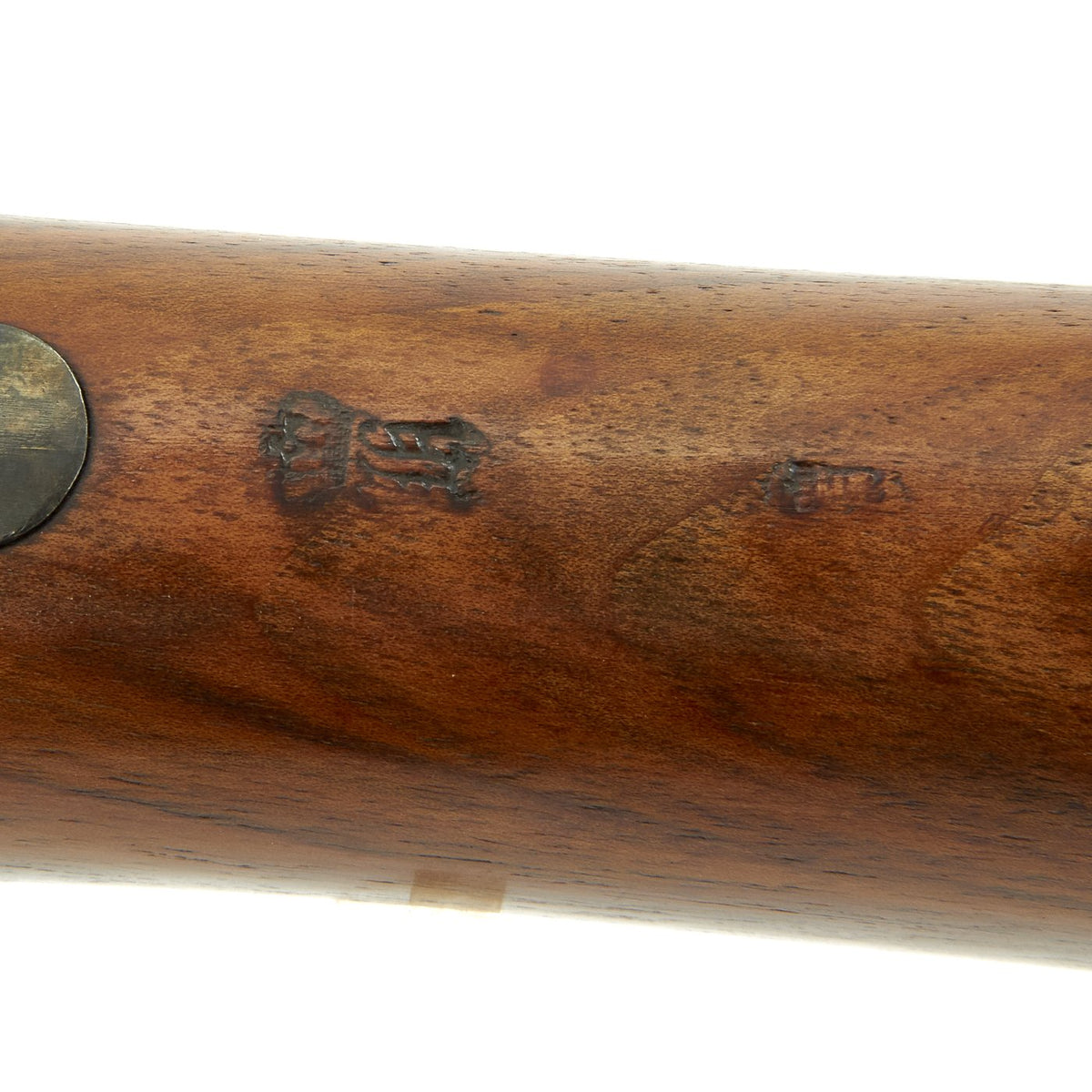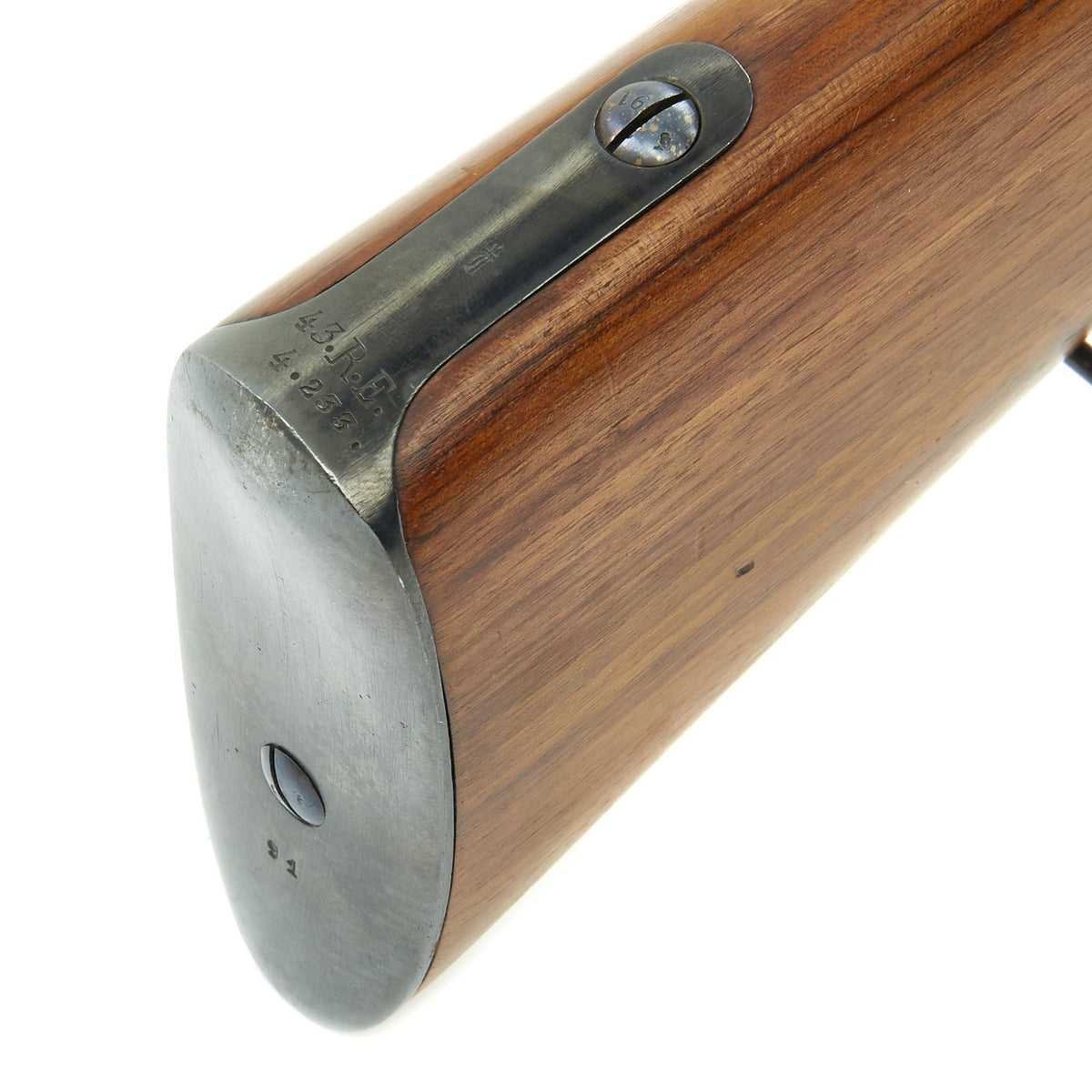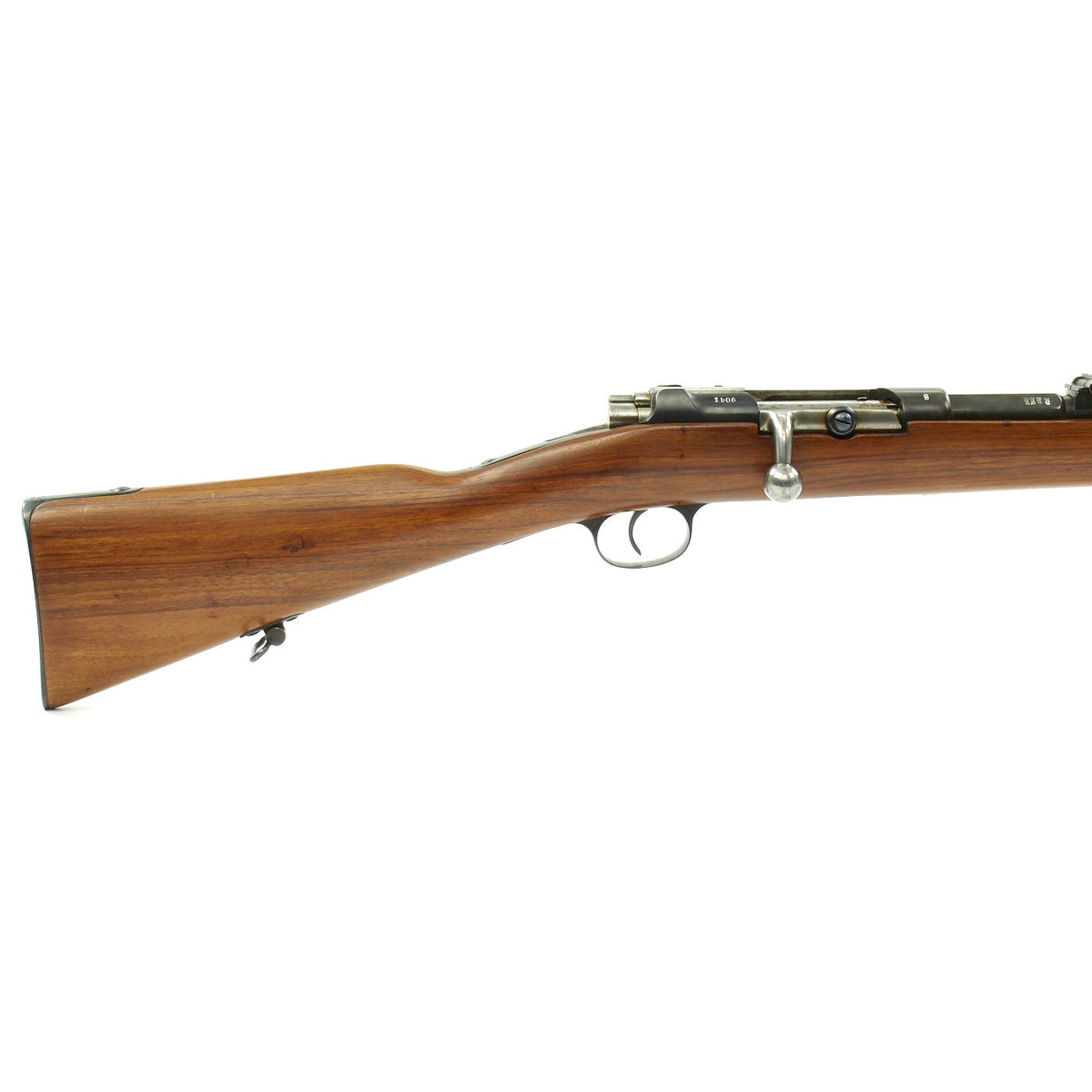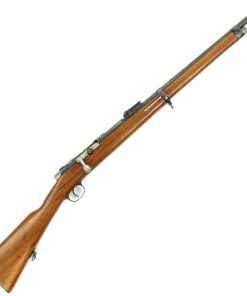Original German Mauser Mod. 71 / 84 by Erfurt Converted to 7mm Trials Rifle for South America Original Items
$ 1.750,00 $ 437,50
Original Item: Only Of A Kind. This came out of a very old U.S. Collection, I am told, in Kansas City. It is one of the NICEST GERMAN MAUSER 71/84 Rifles that we have ever seen. It actually has Regimental markings on the butt plate: 43. R.E. / 4. 233., which would probably be for a reserve regiment. From what we can see, we think this rifle was never used in service before being converted.
The top of the chamber is marked (Crown) over ERFURT, indicating manufacture at the Royal Erfurt Arsenal, located in Thuringia. Below this is the Crown over FW proof for Kaiser Wilhelm I, who used the F.W. monogram.
It is particularly fascinating that perpaps 30 years after it was originally made, it was experimentally converted to 7 X 57 mm Caliber, clearly for the South American Markets of BRAZIL, CHILE and all the other South American Nations, then under the influence of Kaiser Wilhelm and the German Empire. Looking at the “Tower Of Liège” proof marks on the weapon would indicate that the conversion took place in Belgium. Most likely in the early 20th Century, the German arms industry was looking for a way to utilize the large numbers of surplus Mauser 71/84 rifles, which were quite obsolete by that time. So, as a possible offering, this example was converted in 1906 for presentation to South American countries.
As it happened BRAZIL adopted a newer design 1908 7mm MAUSER Rifle, based on the Gew 98 as the 1908 pattern as did ARGENTINA the M-1909 in 7.65mm. This converted Mauser 71/84 in 7mm was never adopted by anyone as far as I know. This has to be VERY RARE! It also has a rather interesting down-turned bolt handle, and was shortened somewhat, so this may have been intended as a cavalry short rifle.
Rated as an ANTIQUE as it was made between 1884 and 1888 when the Germans adopted the M-1888 Commission rifle in 7.92mm, you are not likely to see another one of these GERMAN TRIAL’S RIFLES again. In virtually MINT CONDITION, except for the missing front sight, this is ready to display in the very best of Collections! The bore is unused, and all the internal components have no signs of being fired either.
More on the Mauser Mod. 1871/84
Originally adopted as the Gewehr 71 or Infanterie-Gewehr 71, or “Infantry Rifle 71 (“I.G.Mod.71” was stamped on the rifles themselves) this was the first rifle model in a distinguished line designed and manufactured by Paul Mauser and Wilhelm Mauser of the Mauser company, and later mass-produced at Spandau arsenal.
Paul Mauser developed his bolt-action rifle from 1866 to 1871. During 1870-71 trials with many different rifles took place, with the “M1869 Bavarian Werder” being the Mausers’ chief competitor. The Mauser was provisionally adopted on 2 December 1871, pending the development of an appropriate safety. With support from the government’s Spandau arsenal, the improvements to the safety mechanism were completed and the rifle was formally accepted on 14 February 1872 as Infantry Rifle Model 1871 by the German Empire excluding Bavaria. The action was not based on its predecessor, the Dreyse needle gun which had seen service during the Franco-Prussian War of 1870-71, and which was found to have a number of weaknesses.
The now well known Mauser “wing” type safety lever was developed for the Gewehr 71. The Gewehr 71 is a conventional looking bolt action chambered in 11mm using black powder cartridges. The action included only a bolt guide rib as its single locking lug, locking forward of the receiving bridge. The original design was a single-shot. The design was updated in 1884 with an 8-round tubular magazine designed by Alfred von Kropatschek, making this Germany’s first repeating rifle. This version was designated the Gewehr 1871/84. A version of this repeater was adopted by the Ottoman Empire. Designated the M1887, it differentiated from the M71/84 in that it had a side mounted cleaning rod, a second locking lug on the rear of the bolt, and it was in caliber 9.5×60mmR, which Paul Mauser touted as the most efficient (black powder) cartridge. In the early 20th century a few were converted to 7.65×53mm smokeless by the arsenal in Ankara.
Specifications-
Year of Manufacture: circa 1884 – converted 1906
Caliber: 7×57mm Mauser
Cartridge Type: Centerfire Cartridge
Barrel Length: 24 inches
Overall Length: 43 Inches
Action type: Bolt-Action
Feed System: 5 Round Tubular Magazine
Fast Shipping with Professional Packaging
Thanks to our longstanding association with UPS FedEx DHL, and other major international carriers, we are able to provide a range of shipping options. Our warehouse staff is expertly trained and will wrap your products according to our exact and precise specifications. Prior to shipping, your goods will be thoroughly examined and securely secured. We ship to thousands clients each day across multiple countries. This shows how we're dedicated to be the largest retailer on the internet. Warehouses and distribution centres can be located throughout Europe as well as the USA.
Note: Orders with more than one item will be assigned a processing date depending on the item.
Before shipping before shipping, we'll conduct a thorough inspection of the items you have ordered. Today, the majority of orders will be delivered within 48 hours. The delivery time will be between 3-7 days.
Returns
The stock is dynamic and we cannot completely manage it because multiple stakeholders are involved, including our factory and warehouse. So the actual stock may alter at any time. It's possible that you may not receive your order once the order has been made.
Our policy is valid for a period of 30 days. If you don't receive the product within 30 days, we are not able to issue a refund or an exchange.
You can only return an item if it is unused and in the same state as the day you received it. You must have the item in its original packaging.
Related products
Uncategorized
Uncategorized
Uncategorized
Uncategorized
Uncategorized
Australian WWII Owen MK1 Machine Carbine SMG Custom Fabricated Replica with Sling Original Items
Uncategorized
Uncategorized
Uncategorized
Uncategorized
Uncategorized
Uncategorized
Uncategorized
Angolan Rebel 1970s era 60mm Inert Display Mortar from Angolan Civil War Original Items
Uncategorized
Uncategorized
Uncategorized
Uncategorized
Uncategorized
